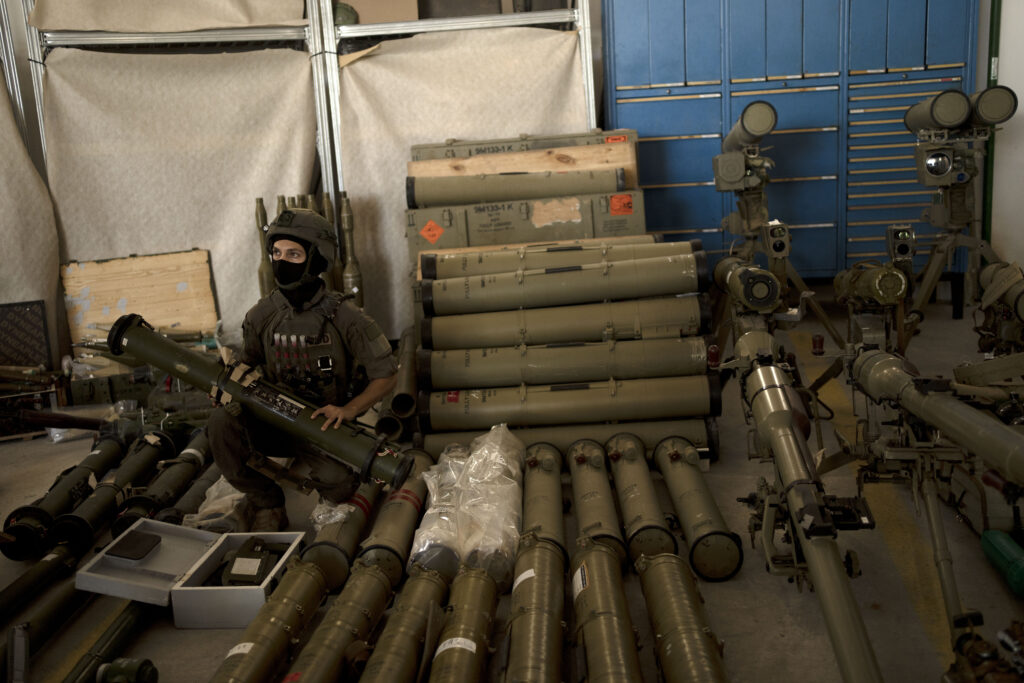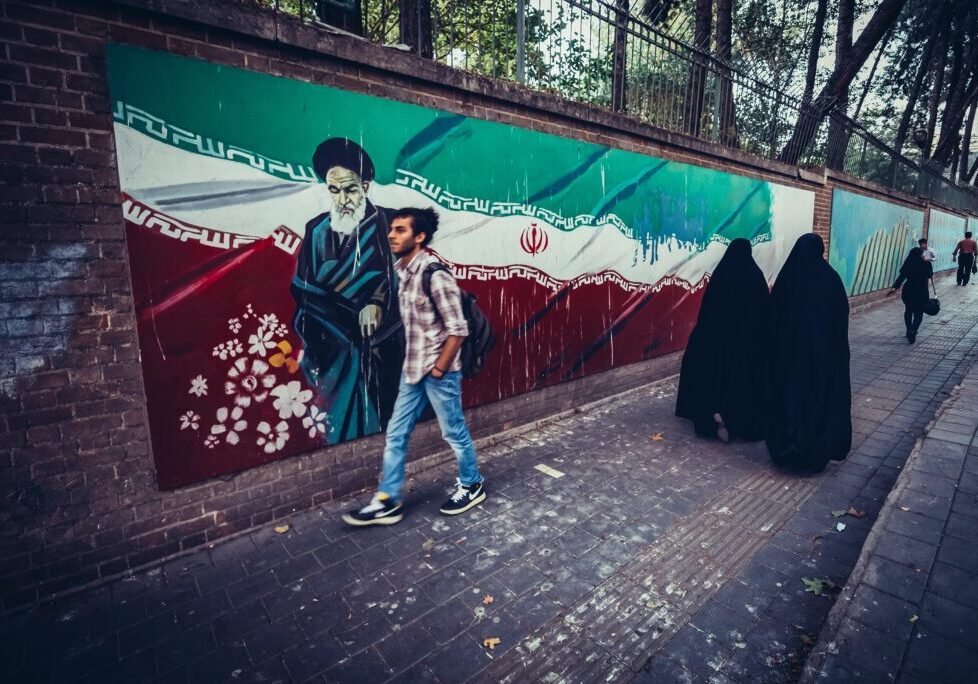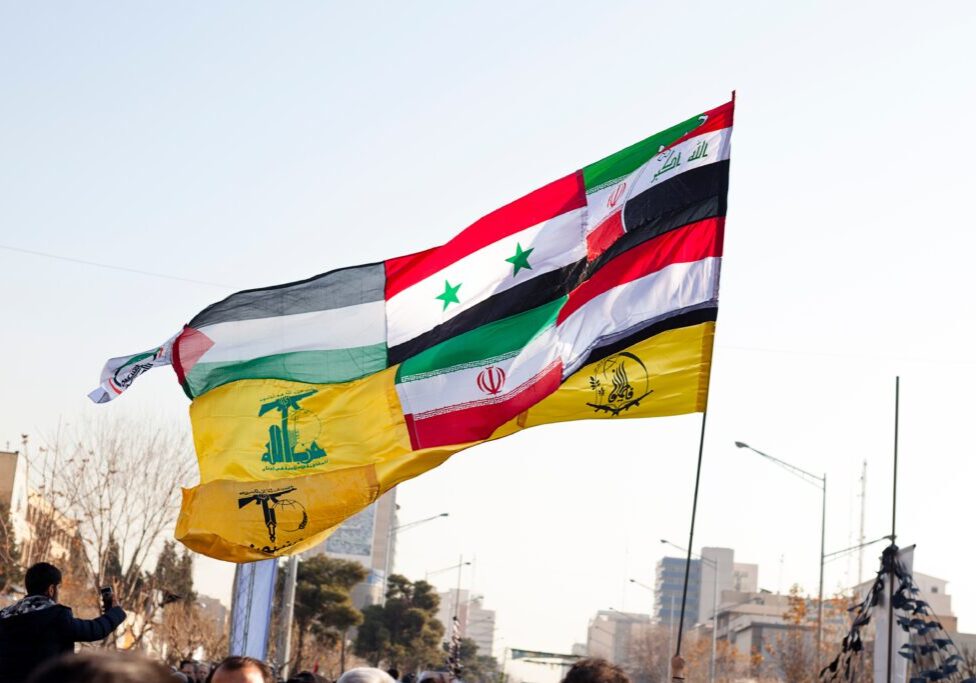Australia/Israel Review
Editorial: Ending the “Ring of Fire”
Oct 16, 2024 | Colin Rubenstein

Lessons must be drawn from Iran’s launching of some 200 ballistic missiles against Israel on October 3, Teheran’s second such attack since April, as well as what Israel has discovered about Hezbollah’s plans and preparations for war during its so-far highly successful recent campaign against this Lebanese proxy of Iran.
Before the current war, Iran had a vast regional war plan against Israel in place, based on a “Ring of Fire” built of proxy armies. This plan had taken decades and hundreds of billions of dollars of military investment to establish. Its primary purpose was very clear and Iran did not hide it – surrounding, slowly overwhelming and ultimately destroying Israel. The Iranians even set up a clock in one of Teheran’s main squares constantly counting down to Israel’s supposed demise in 2040, as predicted by Ayatollah Ali Khamenei.
While the “Ring of Fire” strategy was mostly complete by last year, Iran had been holding off on its war plans, likely in order to protect its nuclear weapons program, which is currently in an advanced yet still vulnerable stage. Completing its atomic weapons capabilities would make the “ring” all but impregnable by giving Iran the ability to deter any possible counterattack through nuclear threats.
According to most analysts, on October 7, 2023, Hamas jumped the gun and activated its part of the plan on its own initiative, hoping the rest of the axis would also be drawn into the war.
Hezbollah, a much stronger terror army than Hamas with even more ambitious invasion plans, was caught unprepared and ultimately chose not to attempt a ground attack – though it reportedly made preparations to do so late last year.
Nonetheless, heeding Hamas’ call, from Oct. 8, Hezbollah began attacking Israel’s northern towns with rockets, missiles and drones on a daily basis, displacing more than 60,000 Israelis. Over time, Iran mobilised the rest of its proxy axis into the war through missile and drone attacks on Israel, as well as attacks on merchant shipping.
Israel had a very rude awakening – not only on October 7, but also following Oct. 8, as Iran encouraged its other proxies to begin a low-intensity regional war. The West, including Australia, should now also wake up from its slumber-like complacency vis-à-vis Iran, its proxies and what they are attempting to do via the “Ring of Fire”.
Under the Albanese Government, Australia’s policies with respect to the Middle East have been based on some dangerous fallacies.
One misconception is that, once war breaks out, ceasefires are the best tool to de-escalate and restore stability. War is always horrible and almost never desirable – but it is simplistic indeed to believe the solution to the horrors of war is to, in effect, shout “stop fighting right now!” rather than deal with the actual causes.
Ceasefires were in place with both Hamas and Hezbollah before October 7. They did not create stability because the forces of “resistance” have no interest in stability, only preparation for the next phase of war.
The Iranian Islamist-jihadist “axis of resistance” views war as part of its religious obligation to erase any non-Muslim control over what it considers “Muslim” land. Periods of calm only provide opportunities to regroup and rearm to reignite the eternal war at a more opportune time.
Moreover, calling for a ceasefire with such groups and imagining it will lead to the negotiation of stable diplomatic arrangements is a pipe dream. For example, the 2006 Israeli-Hezbollah war ended with one such hopeful diplomatic arrangement – UN Security Council Resolution 1701. It was impressive on paper, but Hezbollah and Iran completely disregarded their obligations under it from day one, and no international effort was made to enforce compliance. The result has been Hezbollah dominance of Lebanon, inexorably leading to the current conflict.
Thus, when our Foreign Minister calls for an end to the “cycle of violence”, she not only undermines the essential principle of self-defence but inadvertently assists the Iranian strategy of patiently wearing down Israel’s will to fight through a long war of attrition.
Another fallacy is the claim that the lack of a Palestinian state is the main cause of strife and unrest in the Middle East.
None of the actors in the Iranian axis attacking Israel on seven fronts see the creation of a Palestinian state in the West Bank and Gaza alongside Israel as their goal – only the destruction of Israel. Should the Palestinian leadership finally listen to reason and stop rejecting Israel’s repeated peace offers based on two states for two peoples, Iran and its jihadist proxies would seek to exploit such a development by empowering extremist elements inside that state to continue the fight to eradicate Israel.
This happened after Israel withdrew completely from Gaza in 2005, and it is happening now in the West Bank, where Iran has been smuggling large amounts of arms and funding through Jordan to build up terror groups that openly flout Palestinian Authority rule.
The two-state paradigm remains the most promising long-term goal, but it can’t actually be achieved if the violent Palestinian rejectionists and their Iranian patrons aren’t physically and politically thwarted before, during and after its implementation.
Israel’s bold and highly effective moves against Hezbollah, Iran’s most important proxy, have damaged the Iranian “Ring of Fire” plan severely in a way the Islamic regime never expected. There is now a chance that Lebanon can be rescued from being a de facto Iranian satellite under Hezbollah’s thumb – as well as a failed state thanks to that Hezbollah domination.
Hamas is on the ropes in Gaza, with all its brigades now dismantled and almost all its leadership dead. Unless a premature ceasefire allows it to regroup, it can likely be prevented from again turning the enclave into a vast terror base. Reconstruction will be a huge task, but could create a better future for Palestinians and could be an important first step towards eventual statehood. Yet this is only true if Hamas is not allowed to access and divert the resources that need to flow into Gaza to rebuild, in terms of both infrastructure and a more open political culture.
Anyone who cares about either regional stability or a two-state peace – or the welfare of Palestinians and Lebanese – should thus desperately want Israel’s increasingly successful war against the Iranian “Ring of Fire” to fully achieve its aims in both Gaza and Lebanon.
Furthermore, Iran’s naked aggression against Israel should be the occasion for the institution of long-overdue, serious international efforts to force Iran to verifiably end its nearly completed drive to create nuclear weapons – which again can only destroy any hopes of regional stability or a two-state peace.
Tags: Hamas, Hezbollah, Iran, Israel, Middle East






